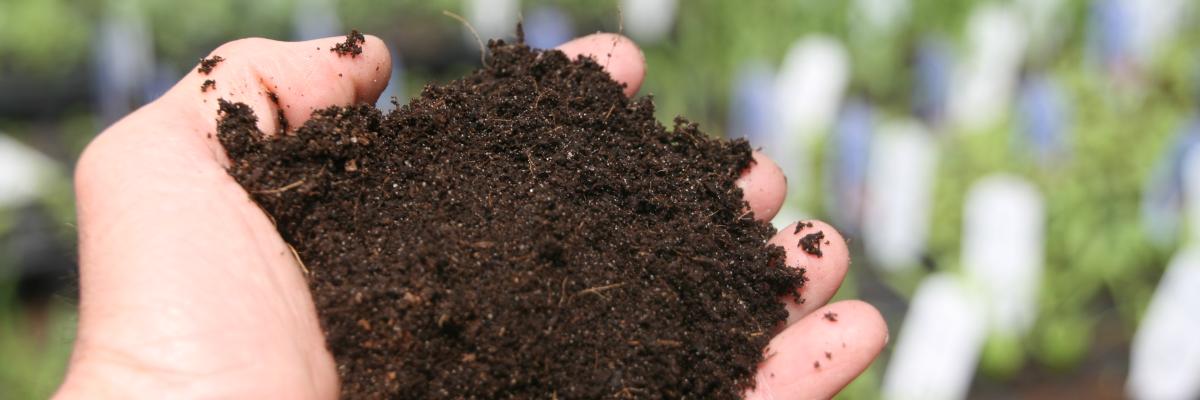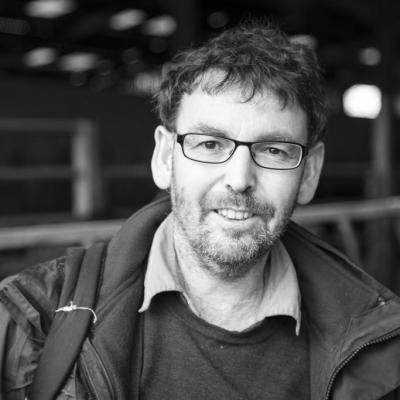
For peat’s sake, just do it!
30 January 2023
It feels like I have been banging the #peatfree drum for a very long time, but finally we seem to be getting somewhere. After decades of prevarication and obstruction by the industry, the signals are there that peat is on the way out. Sales of peat to amateur gardeners will be phased out by next year (2024) and the UK has set targets of phasing out peat in professional horticulture by 2028. But, will this happen? The NFU is against a ban and suggests that a ban may not be introduced until ‘well into the next decade.’ There are hints that growers may be given exemptions to any bans.
When I started out as an organic grower in the late 80s, peat was already an environmental issue - David Bellamy had brought the damaging effects of peat extraction for horticultural use to public attention. Plant-raising in modules and blocks transformed growing and have maximised on lightness, ease of use, and flexibility of peat-based growing media. As a grower back in the 80s, it was easy to justify to oneself that a pallet or two of peat-based growing media was a small use compared to an Irish power station, or that the alternatives weren’t available. I remember driving the van to pick up potting compost directly from a producer on the Somerset levels - nice and local - it was licensed by the Soil Association, therefore it had to be okay - right?
I have long since stopped thinking that way and in 2011, while working at Garden Organic (which has tirelessly campaigned for peat free), I attended Defra consultations on phasing out peat. These were frustrating meetings with the voices of the peat industry and large growers echoing loudly. Voluntary targets were introduced, but very little seemed to change and the targets slipped. Defra realised in 2018 that these voluntary targets don’t work, and as part of its 25-year plan, reaffirmed commitments to phasing out peat in professional horticulture by 2030 (later 2028).
There are commercial alternatives out there that perform well, even if the consistency has been a problem sometimes. I was shocked, back in the summer of last year, on visiting a Bioland-registered plant raiser near Stuttgart in Germany as part of an Organic-PLUS organised tour, to encounter attitudes that took me back thirty years, “our customers are not asking for peat-free”, with the vast majority of plants being produced with peat, and using a staggering 50,500 cubic metres of peat per year.
At the Oxford Real Farming Conference 2023, Jill Vaughan of Delfland Nurseries explained that though they have cracked peat-free modules (they have transitioned the entirety of their module production - conventional and organic - to peat-free) there are still challenges around propagating and mechanically planting lettuce and celery which use peat blocks. There is an Innovative Farmers field lab being developed on this topic.
An Organic-PLUS survey of peat use in organic horticulture (![]() OG58_Peat_survey.pdf) found that more than half of growers did not have any difficulties using the peat-free growing media available in the UK. For those who did have difficulties, these were primarily with the consistency of quality, closely followed by problems with water holding capacity and nutrient supply.
OG58_Peat_survey.pdf) found that more than half of growers did not have any difficulties using the peat-free growing media available in the UK. For those who did have difficulties, these were primarily with the consistency of quality, closely followed by problems with water holding capacity and nutrient supply.
Yes, there are issues surrounding the carbon footprint of alternative materials such as coir, but it is not as clear-cut as one might think. According to Margi Lennartsson of CAWR talking about the HTA/GMA Responsible Sourcing Scheme in a recent DIY peat-free growing media webinar: “There have always been doubts about coir around the energy needed to transport it. But in fact, the energy use and energy in transport is not much greater than for green compost or wood fibre. Where coir sometimes does badly is on water use, and that’s mainly in the processing to produce the coconut fibre, and that water use can also then be often linked to pollution incidences.” The future has to be the use of local materials, and DIY mixes perform well on most criteria, though additions of vermiculite, which needs a lot of energy in its manufacture, can be an issue.
Iain Tolhurst (Tolly) has been peat-free for 30 years and has been trail-blazing the use of woodchip compost in growing media, taking part in a field lab on the topic in 2014. He shared his knowledge, together with input from researchers at CAWR in the same webinar. The Organic-PLUS growers’ peat survey also contained a call for ‘Fast-growing biomass crops suitable for making peat-free compost, combined with more localised production,’ and for ‘more UK-produced product to be available, easy to purchase and approved by certification bodies.’
Tolly is also passionate about the use of bare-root transplants, also known as peg plants, which were widely used before modules took off. They are most suited to growing brassicas and leeks, but celeriac is also possible. They can produce much stronger plants, give flexibility for the grower in planting times, and resilience, as the plants are growing in a biologically active soil. Rather than looking for input substitution, finding alternatives to peat, we need to take a step back and look at the system - how would we design a system without peat? Register for the webinar on ‘Growing peg plants - bare root transplants’ here.
We can’t be growers championing our sustainable production and continue using peat. The issues at stake - biodiversity loss and the loss of carbon - are just too great. Growers need to take a lead and say no to peat now.
Phil Sumption - Bio Communications - carries out research communication for the Organic Research Centre.

Header image shows peat-free organic growing media (Klasmann). Both photos taken by Phil Sumption. All Rights Reserved


